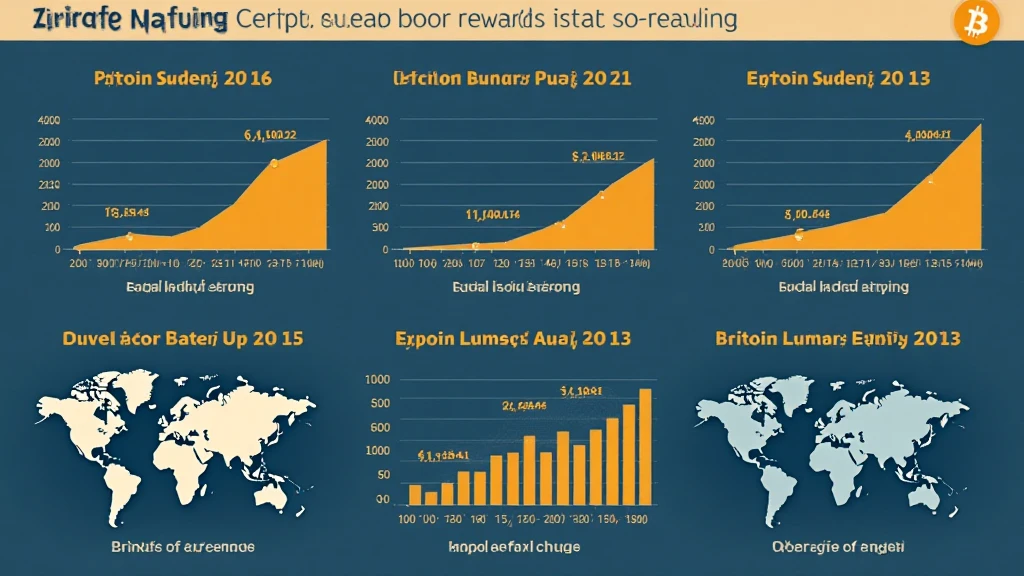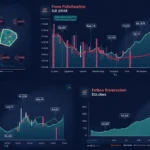Introduction
In the ever-evolving world of cryptocurrency, understanding the nuances of Bitcoin halving is crucial for investors and enthusiasts alike. With Bitcoin’s value soaring and plummeting over the years, the events surrounding halving have left lasting impressions on the market. Did you know that approximately $4.1 billion was lost due to DeFi hacks in 2024, a testament to the increasing relevance of security in the blockchain space? This brings us to the crucial question: What exactly is Bitcoin halving, and how has historical data shaped its influence on the market dynamics?
In this article, we’ll delve into the historical data surrounding Bitcoin halving and dissect its implications for investors and the broader cryptocurrency ecosystem. Whether you’re an experienced trader or a newcomer, the insights shared here will enhance your understanding of Bitcoin halving and its relevance in today’s market.
The Fundamentals of Bitcoin Halving
Bitcoin halving occurs approximately every four years, reducing the reward for mining a new block by half. This event not only affects the earnings of miners but also has profound implications on Bitcoin’s supply, demand, and ultimately, the market price.

Let’s consider a simple analogy: Think of Bitcoin halving as a factory that produces a limited number of luxury cars. When production is halved, the scarcity of these cars increases, leading to higher demand and potentially higher prices. The same principle applies to Bitcoin’s halving, impacting its market dynamics.
A Historical Overview
To truly understand the impact of Bitcoin halving, let’s take a look at historical data from prior halvings:
1. The First Halving (2012)
- Block Reward: 50 BTC to 25 BTC
- Date: November 28, 2012
- Price Pre-Halving: $12
- Price Post-Halving (1 Year Later): $1,137
2. The Second Halving (2016)
- Block Reward: 25 BTC to 12.5 BTC
- Date: July 9, 2016
- Price Pre-Halving: $650
- Price Post-Halving (1 Year Later): $2,525
3. The Third Halving (2020)
- Block Reward: 12.5 BTC to 6.25 BTC
- Date: May 11, 2020
- Price Pre-Halving: $8,500
- Price Post-Halving (1 Year Later): $64,000
Each halving event has been followed by substantial price increases, indicating a potential trend for the next halving, expected in 2024.
How Bitcoin Halving Influences Market Dynamics
In examining the historical data, it becomes evident that Bitcoin halving has substantial implications on market dynamics and investor behavior. Here are some key aspects to consider:
Supply and Demand
With each halving, the supply of new Bitcoins entering circulation diminishes. This reduction in supply, coupled with steady or increasing demand, often leads to price appreciation.
Investor Sentiment
As halving events approach, speculation tends to increase among investors, contributing to market volatility. This phenomenon can be attributed to the anticipation of price surges, leading to panic buying and selling.
Mining Economics
Halving impacts miners directly, as their rewards decrease. This can lead to a shake-up in the mining industry, favoring more efficient miners while potentially pushing less efficient ones out of business.
The Future of Bitcoin Halving
With the next halving projected for 2024, investors are keenly watching market trends. There’s a burgeoning debate on significant events slated for 2025 as economic conditions evolve. The insights we gain from the 2020 halving will likely be essential for future predictions.
As per recent analyses, the 2025 landscape for altcoins will emerge shortly after the 2024 halving. Keywords such as ‘2025 altcoin potential’ are drawing the attention of many investors preparing for the next bull run.
Bitcoin Halving and Security Standards
In addition to understanding Bitcoin halving’s impact on price, assessing the security standards surrounding blockchain transactions is vital. For blockchain enthusiasts in Vietnam, not adhering to tiêu chuẩn an ninh blockchain can lead to dire consequences.
With an increasing number of users adopting cryptocurrency in Vietnam, the growth rate of Bitcoin and blockchain technology users is projected to rise significantly. This could lead to more scrutiny of security measures, especially in light of the growing number of hacks and breaches reported in recent years.
Preparing for the Next Halving
Investors often need to prepare strategically to navigate the complexities of Bitcoin halving and the accompanying market behavior:
- Research historical data and trends.
- Consider diversifying portfolios with potential altcoins.
- Stay informed about upcoming regulatory changes.
Conclusion
In summary, the history and data surrounding Bitcoin halving are pivotal for understanding market dynamics. The upcoming halving in 2024 offers an intriguing opportunity for investors to reassess their strategies in light of past trends and current conditions. Moreover, as Bitcoin’s value fluctuates, ensuring compliance with evolving security standards in blockchain technology will be essential for all participants. Understanding the implications of Bitcoin halving can not only inform investment decisions but also assist in building a more secure and robust cryptocurrency ecosystem.
As we look ahead, the interplay between market expectations and actual performance will shape the future for Bitcoin, with historical data serving as both a guide and a warning.







